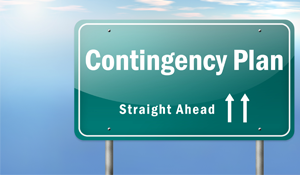We’ve seen a lot of disasters happen in the U.S. in recent years. Nearly two weeks after the storm...
Are You Prepared for the Worst?
“Why should we look to the past in order to prepare for the future? Because there is nowhere else to look.” ― James Burke
It’s been a pretty grim last few weeks – hurricanes in Texas, Florida, and Puerto Rico, the Las Vegas shootings, and California wildfires. It seems like every day a new disaster – whether natural or man made – has affected some area of the U.S.
The importance of contingency and disaster planning for business owners is more clear than ever.
Having a plan in place and being able to put it into immediate action can mean the difference between staying open or closing your doors should disaster strike. Let’s look at some of the ways that business owners can start to prepare their businesses for the worst.
Disaster Preparations: What You Need to Consider
It’s critical for businesses to identify and quantify the risks they have and develop processes and tools that can be used to mitigate them. Some of the key questions you want to answer include:
- Who will be in charge should disaster strike?
- How is the company going to fulfill the promises made to its customers?
- How will you communicate with all potentially affected parties, including customers, suppliers, employees, etc.? What are your protocols?
Once you answer these questions, you’ll want to develop written policies, procedures and training programs that can be used by your whole team. In order to do this:
- Consider working with risk management and security professionals.
- Develop management redundancies.
- Back up your IT systems regularly – create backup redundancy in the cloud or off-site, especially for critical data and programs. Have a plan for getting your systems back up and running as quickly as possible.
- Establish specific communications policies and processes for employees, vendors, and customers.
- Review your insurance coverage at least annually to ensure that you’re covered in as many areas as possible.
- Ensure that all employees are trained for emergency situations, including securing property and evacuation procedures.
- Create and revisit your emergency response plan at planned intervals and make sure it is accessible even if your internal systems go down.
“Minor Disasters”: What Are They?
It’s easy to focus on (and become anxious about) the possibilities of major disasters. But it’s more likely to be a minor disaster that can be catastrophic for your business, such as a water main break that destroys your technology infrastructure, a fire that destroys all of your company’s inventory, a critical equipment failure, or an employee who embezzles money.
Remember, a sharp decrease in business is always a real possibility.
For example, the article “Businesses far from the devastation can feel hurricanes' impact” (USA Today) discusses how businesses in the Northeastern part of the country—whose customers are largely based in Florida and the Gulf Coast—have been hit hard by the effects of the hurricanes, even though they are thousands of miles away.
Sobering Statistics – Don’t Become One of Them
Almost 40% of small businesses never reopen their doors after a disaster, according to the Federal Emergency Management Agency (FEMA). Even more disheartening, according to AON, a provider of risk management products, 80% of companies that fail to recover from a major disaster within one month will go out of business.
If you don’t want your business to become one of these statistics, it’s time to start planning.
Here are a few helpful resources from the IRS:
IRS’s Disaster Resource Guide for Individuals and Businesses https://www.irs.gov/pub/irs-pdf/p2194.pdf
Tips for Individuals Who Need to Reconstruct Records After a Disaster https://www.irs.gov/newsroom/tips-for-individuals-who-need-to-reconstruct-records-after-a-disaster



